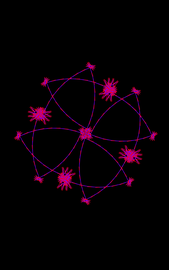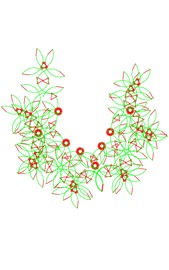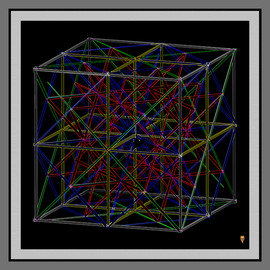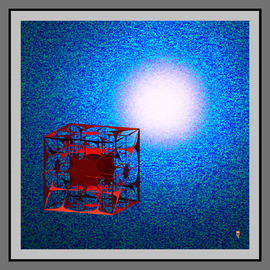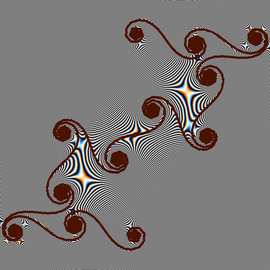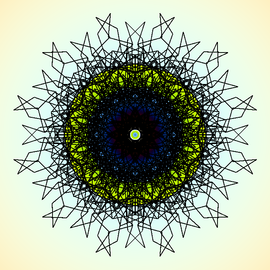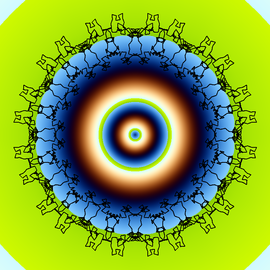Jean Constant - Crystallographic points groups
Crystallography is the branch of science devoted to the study of crystalline structure. It has far-reaching applications in mineralogy, chemistry, physics, mathematics, biology and materials science (iucr.org). A crystallographic point group is a group of symmetry operations all of which leave at least one point unmoved.
Symmetry, or self similarity is the subject of numerous studies in geometry, theoretical modeling and other mathematical fields. It is also a fundamental concept in design oriented disciplines.
Retired professor Steve Dutch’s template, developed for studies in field of applied science, was used as the foundation of an investigation of the symmetry principle in a 2 dimensional environment.
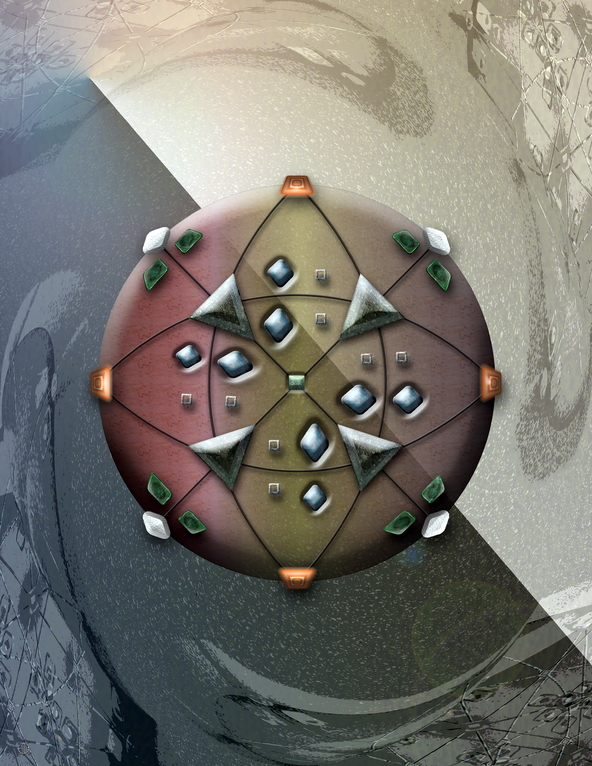
Isometric symmetry #1
Example of an isometric symmetry.
The outline of an isometric profile correspond to three crystallographic axes of equal length and at right angles to each other. The template’s outline has been transferred in a raster environment to create this visualization.
Black and white shading and texture were added to give the lines a sense of weigh distance and a triadic color scheme was selected to bring the composition elements together.
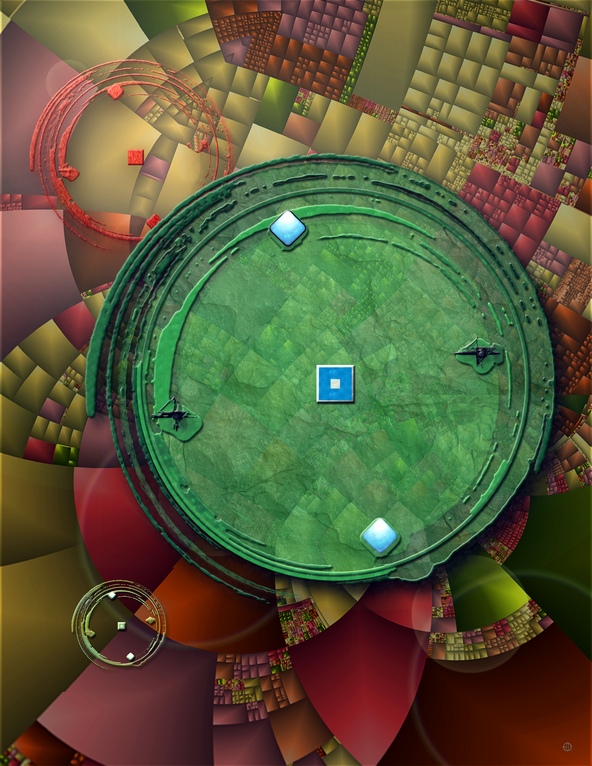
Tetragonal symmetry
Example of a tetragonal symmetry.
The Tetragonal Crystal System differs from the isometric system in such way that one of its three axes of its axial system stands out and can be interpreted as the main axis (Lovelace).
The outline of a tetragonal profile has been transferred in a raster environment to create this visualization. A Droste effect was applied to the background and a complementary color scheme was applied to the various elements of the composition to enhance its dynamic.





